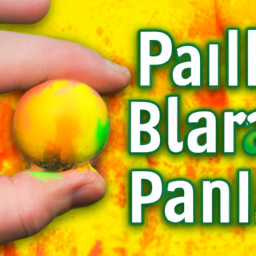Does Paintball Hurt Answers
Table of Contents []
Does A Paintball Hurt
Introduction
If you've ever heard about paintball or have seen it played in movies, you may wonder, Does a paintball hurt? The truth is, it hurt when shot at close range, but not so much when shot at a distance. To help you understand this better, we have pulled together eight to twelve relevant topics. In this article, we will look into how various factors affect the level of pain caused by paintball. We will examine the speed of a paintball, the types of paintballs, various types of protective gear, the level of physical fitness of the players, and other related topics. We will also provide popular subtopics that will give readers a thorough understanding of paintball and the level of pain that can be expected.
Speed of a Paintball
To understand how a paintball hurts, we need to look at the speed of a paintball and how that contributes to the sensation of pain. Paintballs typically travel at 200-300 feet per second, which translates to about 135-200 miles per hour. The faster a paintball is shot, the harder it will hit the target and the more pain it will cause. Therefore, the level of pain experienced largely depends on the speed at which the paintball is fired.
Types of Paintballs
The type of paintball is also a factor that affects the level of pain. Paintballs come in various sizes and colors. Smaller paintballs generally travel faster, meaning they can cause more pain on impact than larger paintballs. The softer the shell of the paintball, the more likely it is that it will break on impact, meaning more paint residue is left behind, and more pain occurs.
Protective Gear
Using the right kind of protective gear can lessen the amount of pain suffered when struck by a paintball. Players typically wear long-sleeved shirts and pants, along with goggles or helmets to protect themselves from paintball pellets. The amount of padding used in these protective garments affects the amount of pain felt. Thicker, more padded gear gives more protection from paintball pellets and can reduce the amount of pain experienced.
Level of Physical Fitness
The level of physical fitness also affects the amount of pain caused by a paintball. Players who are more physically fit are better able to handle the impact of a paintball pellet. Similarly, players who are less physically fit may be more prone to feeling greater amounts of pain when struck by a paintball.
Distance of the Paintballs:
The distance of the paintball can also have an effect on the amount of pain it causes. Paintballs fired at long distances typically do not hurt as much as paintballs fired at close range. Therefore, players are advised to keep their distance and stay out of close range of paintball guns if they want to minimize the amount of pain experienced.
Cushioning of Surfaces:
The cushioning of surfaces may also play a role in how much a paintball hurts. Hard, flat surfaces that don't have any cushioning will cause the paintball to bounce off and hit the player with more force, resulting in greater pain. Soft, cushioned surfaces absorb some of the impact and reduce the amount of pain the player experiences.
Paintball Guns:
The type of paintball gun used can also influence the severity of pain experienced when hit by a paintball. Guns with high-velocity barrels shoot further and with more force, causing a greater impact on impact. Guns with lower velocity barrels will not shoot as far and with less force, resulting in a softer impact on impact.
Conclusion
So does a paintball hurt? The answer is yes, it can cause some pain if a player is hit at close range with a paintball shot at a high velocity. Players can minimize the amount of pain they experience, however, by using the right type of protective gear, staying at a distance from the guns, and shooting at a reduced velocity when necessary. All these factors put together will help determine the level of pain experienced by a paintball player.

Previous Page
Next Page